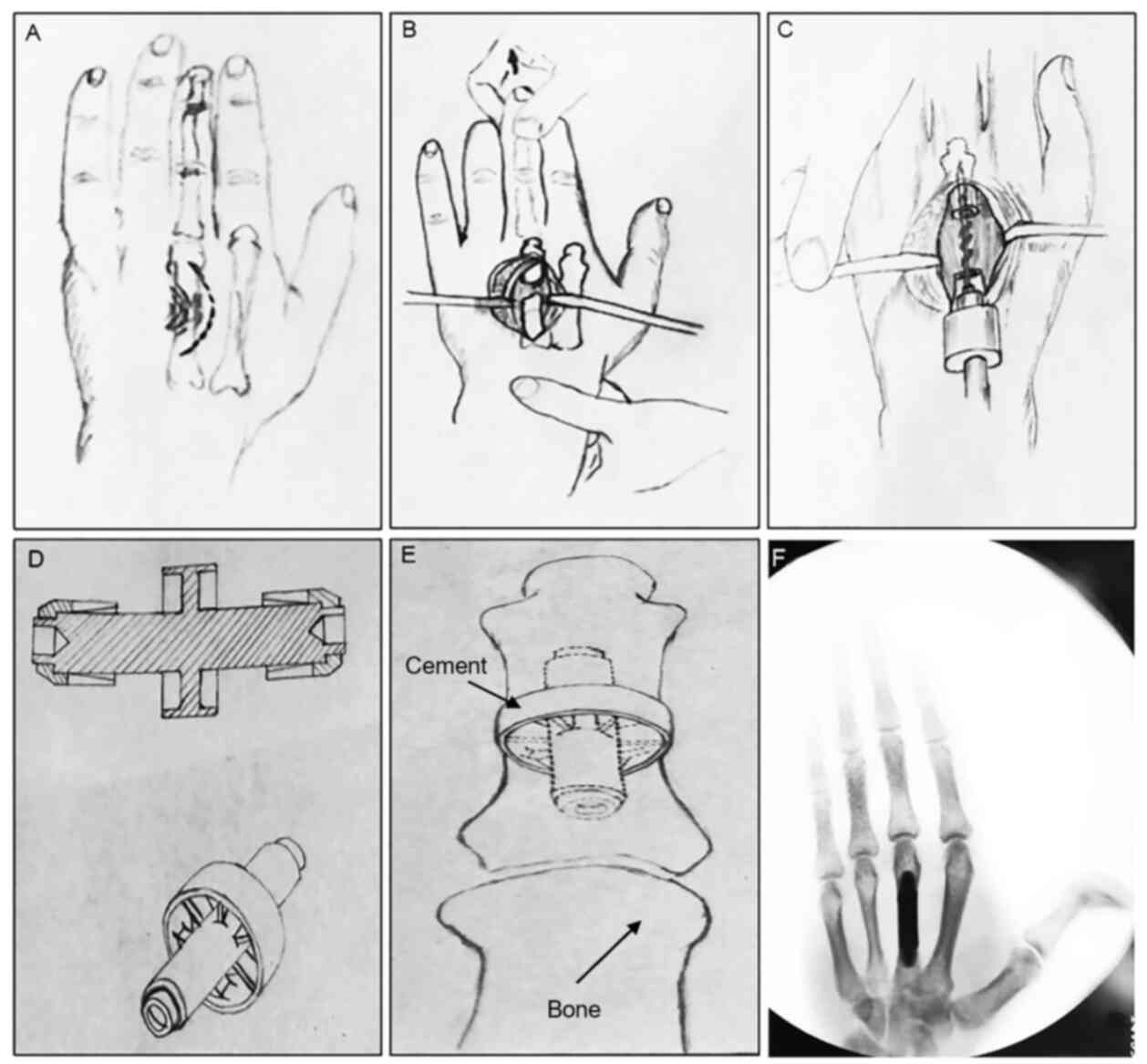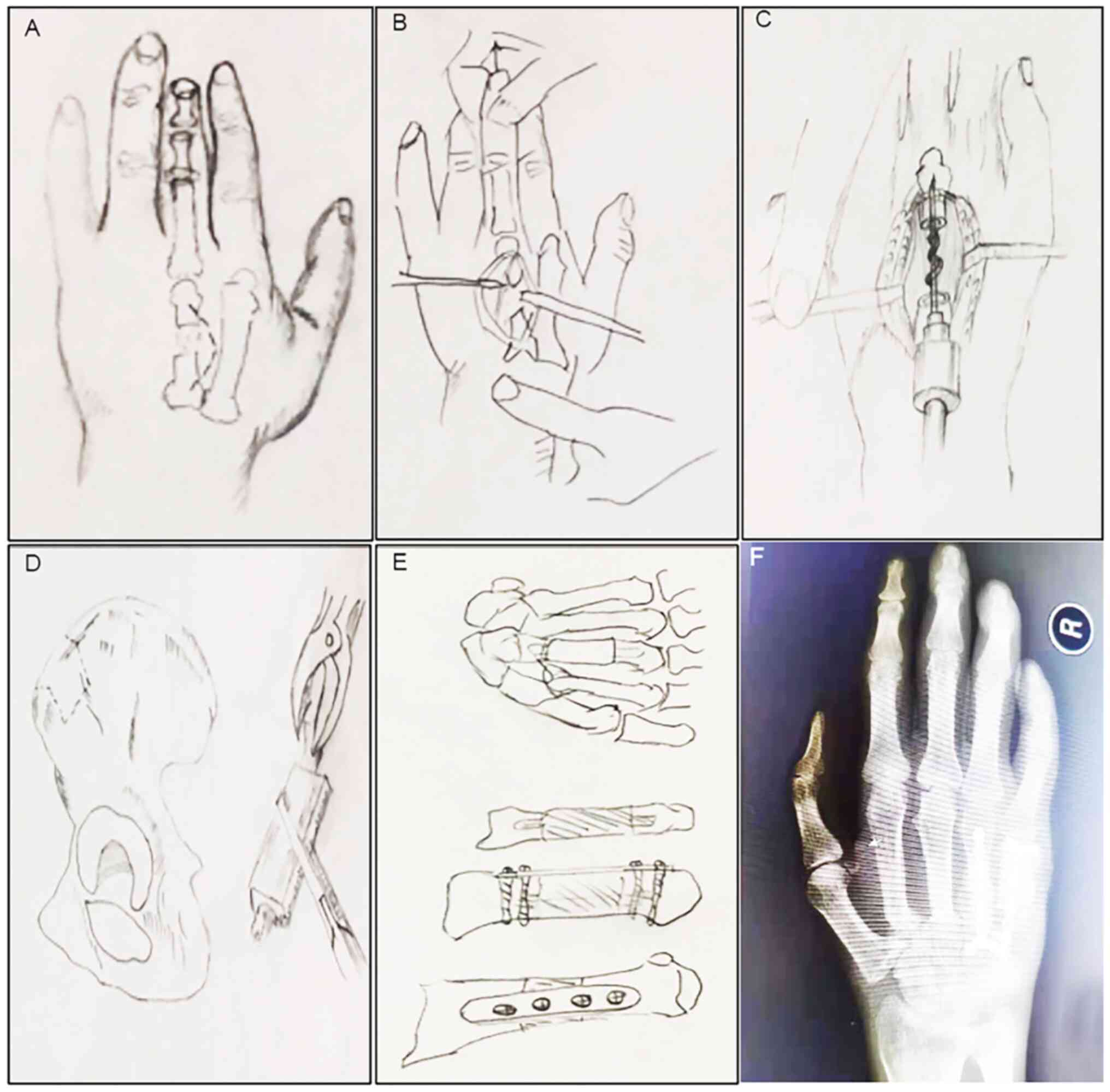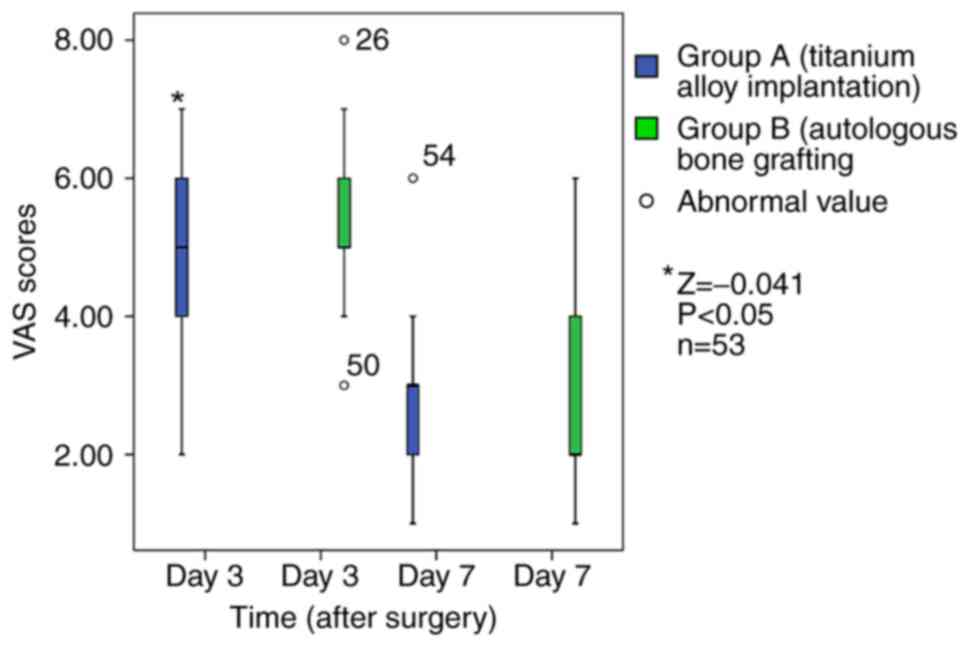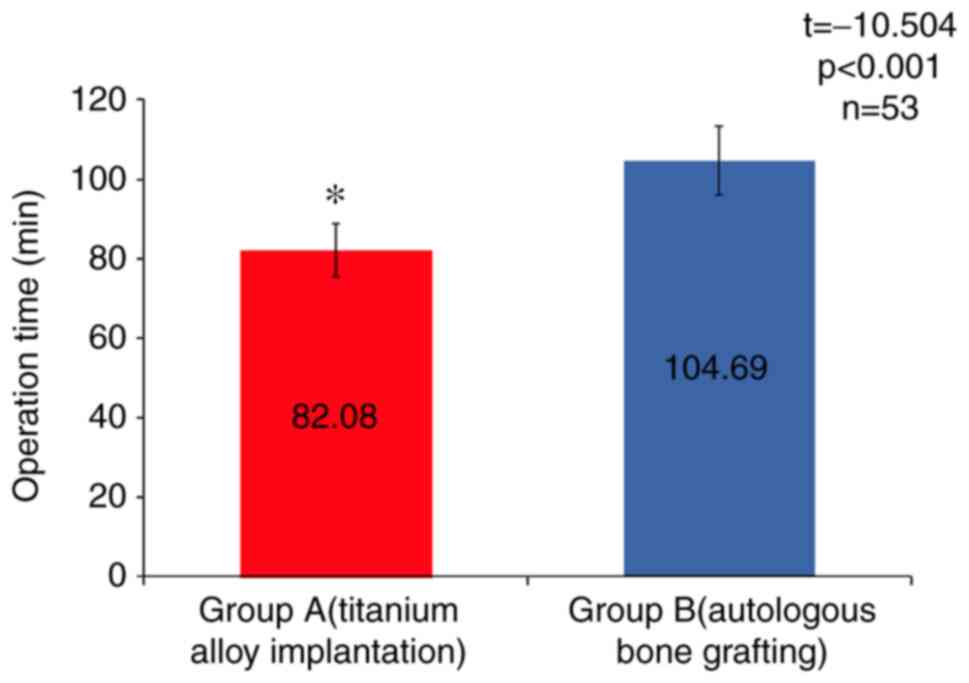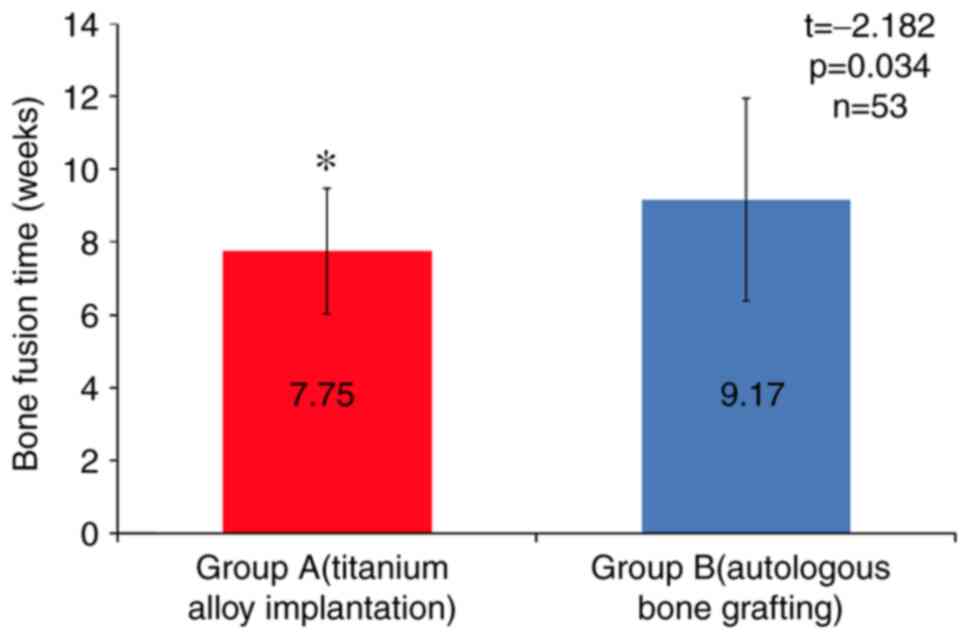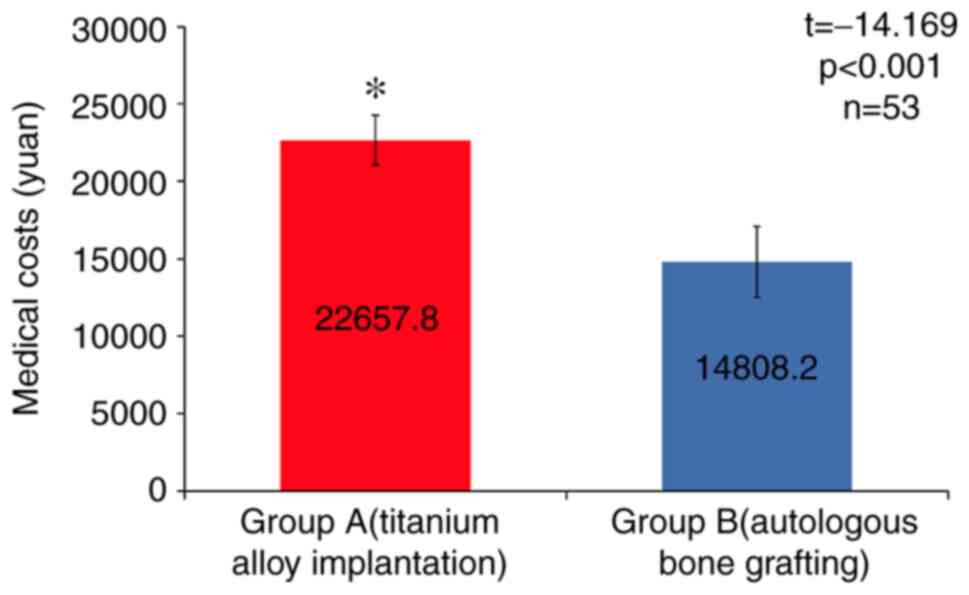|
1
|
WHO: Injuries and violence: The facts
2014. World Health Organization, Geneva, 2014.
|
|
2
|
Mauffrey C, Barlow BT and Smith W:
Management of segmental bone defects. J Am Acad Orthop Surg.
23:143–53. 2015.PubMed/NCBI View Article : Google Scholar
|
|
3
|
Lu H, Liu Y, Guo J, Wu H, Wang J and Wu G:
Biomaterials with antibacterial and osteoinductive properties to
repair infected bone defects. Int J Mol Sci. 17(334)2016.PubMed/NCBI View Article : Google Scholar
|
|
4
|
Güleç A, Özdemir A, Durgut F, Yildirim A
and Acar MA: Comparison of innervated digital artery perforator
flap versus homodigital reverse flow flap techniques for fingertip
reconstruction. J Hand Surg Am. 44:801.e1–801.e6. 2019.PubMed/NCBI View Article : Google Scholar
|
|
5
|
García-Gareta E, Coathup MJ and Blunn GW:
Osteoinduction of bone grafting materials for bone repair and
regeneration. Bone. 81:112–121. 2015.PubMed/NCBI View Article : Google Scholar
|
|
6
|
Panattoni JB, De Ona IR and Ahmed MM:
Reconstruction of fingertip injuries: Surgical tips and avoiding
complications. J Hand Surg Am. 40:1016–1024. 2015.PubMed/NCBI View Article : Google Scholar
|
|
7
|
Germann G, Rudolf KD, Levin SL and
Hrabowski M: Fingertip and thumb tip wounds: Changing algorithms
for sensation, aesthetics, and function. J Hand Surg Am.
42:274–284. 2017.PubMed/NCBI View Article : Google Scholar
|
|
8
|
Özcanlı H, Bektaş G, Cavit A, Duymaz A and
Coşkunfırat OK: Reconstruction of fingertip defects with digital
artery perforator flap. Acta Orthop Traumatol Turc. 49:18–22.
2015.PubMed/NCBI View Article : Google Scholar
|
|
9
|
Griffin KS, Davis KM, McKinley TO, Anglen
JO, Chu TMG, Boerckel JD and Kacena MA: Evolution of bone grafting:
Bone grafts and tissue engineering strategies for vascularized bone
regeneration. Clinic Rev Bone Miner Metab. 13:232–244. 2015.
|
|
10
|
Bhumiratana S, Bernhard JC, Alfi DM,
Yeager K, Eton RE, Bova J, Shah F, Gimble JM, Lopez MJ, Eisig SB
and Vunjak-Novakovic G: Tissue-engineered autologous grafts for
facial bone reconstruction. Sci Transl Med. 8:343ra83.
2016.PubMed/NCBI View Article : Google Scholar
|
|
11
|
Tang D, Tare RS, Yang LY, Williams DF, Ou
KL and Oreffo RO: Biofabrication of bone tissue: Approaches,
challenges and translation for bone regeneration. Biomaterials.
83:363–382. 2016.PubMed/NCBI View Article : Google Scholar
|
|
12
|
Evans CH and Huard J: Gene therapy
approaches to regenerating the musculoskeletal system. Nat Rev
Rheumatol. 11:234–242. 2015.PubMed/NCBI View Article : Google Scholar
|
|
13
|
García JR, Clark AY and García AJ:
Integrin-specific hydrogels functionalized with VEGF for
vascularization and bone regeneration of critical-size bone
defects. J Biomed Mater Res A. 104:889–900. 2016.PubMed/NCBI View Article : Google Scholar
|
|
14
|
Martino MM, Briquez PS, Maruyama K and
Hubbell JA: Extracellular matrix-inspired growth factor delivery
systems for bone regeneration. Adv Drug Deliv Rev. 94:41–52.
2015.PubMed/NCBI View Article : Google Scholar
|
|
15
|
Egol KA, Nauth A, Lee M, Pape HC, Watson
JT and Borrelli J Jr: Bone grafting: Sourcing, timing, strategies,
and alternatives. J Orthop Trauma. 29 (Suppl 12):S10–S14.
2015.PubMed/NCBI View Article : Google Scholar
|
|
16
|
A.M.J.J.o.S.M. Ahmad Oryan, D. Studies, An
Overview on Bone Tissue Engineering and Regenerative Medicine:
Current Challenges, Future Directions and Strategies.
|
|
17
|
Campana V, Milano G, Pagano E, Barba M,
Cicione C, Salonna G, Lattanzi W and Logroscino G: Bone substitutes
in orthopaedic surgery: From basic science to clinical practice. J
Mater Sci Mater Med. 25:2445–2461. 2014.PubMed/NCBI View Article : Google Scholar
|
|
18
|
Gruskay JA, Basques BA, Bohl DD, Webb ML
and Grauer JN: Short-term adverse events, length of stay, and
readmission after iliac crest bone graft for spinal fusion. Spine
(Phila Pa 1976). 39:1718–1724. 2014.PubMed/NCBI View Article : Google Scholar
|
|
19
|
Heneghan HM and McCabe JP: Use of
autologous bone graft in anterior cervical decompression: Morbidity
& quality of life analysis. BMC Musculoskelet Disord.
10(158)2009.PubMed/NCBI View Article : Google Scholar
|
|
20
|
Hernigou P: Bone transplantation and
tissue engineering, part III: Allografts, bone grafting and bone
banking in the twentieth century. Int Orthop. 39:577–587.
2015.PubMed/NCBI View Article : Google Scholar
|
|
21
|
Agarwal R and García AJ: Biomaterial
strategies for engineering implants for enhanced osseointegration
and bone repair. Adv Drug Deliv Rev. 94:53–62. 2015.PubMed/NCBI View Article : Google Scholar
|
|
22
|
Beuriat PA, Szathmari A, Grassiot B, Di
Rocco F and Mottolese C: Why a hydroxyapatite cranioplasty can be
used to repair a cranial bone defect in children: Experience of 19
cases. Neurochirurgie. 62:251–257. 2016.PubMed/NCBI View Article : Google Scholar : (In French).
|
|
23
|
Lindsey RW, Gugala Z, Milne E, Sun M,
Gannon FH and Latta LL: The efficacy of cylindrical titanium mesh
cage for the reconstruction of a critical-size canine segmental
femoral diaphyseal defect. J Orthop Res. 24:1438–1453.
2010.PubMed/NCBI View Article : Google Scholar
|
|
24
|
Ryan GE, Pandit AS and Apatsidis DP:
Porous titanium scaffolds fabricated using a rapid prototyping and
powder metallurgy technique. Biomaterials. 29:3625–3635.
2008.PubMed/NCBI View Article : Google Scholar
|
|
25
|
Lin SY, Huang PJ, Huang HT, Chen CH, Cheng
YM and Fu YC: An alternative technique for the management of
phalangeal enchondromas with pathologic fractures. J Hand Surg Am.
38:104–109. 2013.PubMed/NCBI View Article : Google Scholar
|
|
26
|
Soni A, Gulati A, Bassi JL, Singh D and
Saini UC: Outcome of closed ipsilateral metacarpal fractures
treated with mini fragment plates and screws: A prospective study.
Comparative Study. 13:29–33. 2012.PubMed/NCBI View Article : Google Scholar
|
|
27
|
Hsia RY, Nath JB and Baker LC: California
emergency department visit rates for medical conditions increased
while visit rates for injuries fell, 2005-11. Health Aff
(Millwood). 34:621–626. 2015.PubMed/NCBI View Article : Google Scholar
|
|
28
|
De Putter CE, van Beeck EF, Polinder S,
Panneman MJ, Burdorf A, Hovius SE and Selles RW: Healthcare costs
and productivity costs of hand and wrist injuries by external
cause: A population-based study in working-age adults in the period
2008-2012. Injury. 47:1478–1482. 2017.
|
|
29
|
Dias JJ and Garcia-Elias M: Hand injury
costs. Injury. 37:1071–1077. 2006.PubMed/NCBI View Article : Google Scholar
|
|
30
|
Grivna M, Eid HO and Abu-Zidan FM:
Epidemiology of isolated hand injuries in the United Arab Emirates.
World J Orthop. 7:570–776. 2016.PubMed/NCBI View Article : Google Scholar
|
|
31
|
Chau N, Gauchard GC, Siegfried C,
Benamghar L, Dangelzer JL, Français M, Jacquin R, Sourdot A, Perrin
PP and Mur JM: Relationships of job, age, and life conditions with
the causes and severity of occupational injuries in construction
workers. Int Arch Occup Environ Health. 77:60–66. 2004.PubMed/NCBI View Article : Google Scholar
|
|
32
|
Scheker LR and Becker GW: Distal finger
replantation. J Hand Surg Am. 36:521–528. 2011.PubMed/NCBI View Article : Google Scholar
|
|
33
|
Wang W and Yeung KWK: Bone grafts and
biomaterials substitutes for bone defect repair: A review. Bioact
Mater. 2:224–247. 2017.PubMed/NCBI View Article : Google Scholar
|
|
34
|
Hung YW, Ko WS, Liu WH, Chow CS, Kwok YY,
Wong CW, Tse WL and Ho PC: Local review of treatment of hand
enchondroma (artificial bone substitute versus autologous bone
graft) in a tertiary referral centre: 13 years' experience. Hong
Kong Med J. 21:217–223. 2015.PubMed/NCBI View Article : Google Scholar
|
|
35
|
Heinl P, Rottmair A, Koerner C and Singer
RF: Cellular Titanium by Selective Electron Beam Melting. Adv Eng
Mater. 9:360–364. 2010.
|
|
36
|
Saulacic N, Bosshardt DD, Bornstein MM,
Berner S and Buser D: Bone apposition to a titanium-zirconium alloy
implant, as compared to two other titanium-containing implants. Eur
Cell Mater. 23:273–288. 2012.PubMed/NCBI View Article : Google Scholar
|
|
37
|
Liodaki E, Kraemer R, Mailaender P and
Stang F: The use of bone graft substitute in hand surgery: A
prospective observational study. Medicine (Baltimore).
95(e3631)2016.PubMed/NCBI View Article : Google Scholar
|















